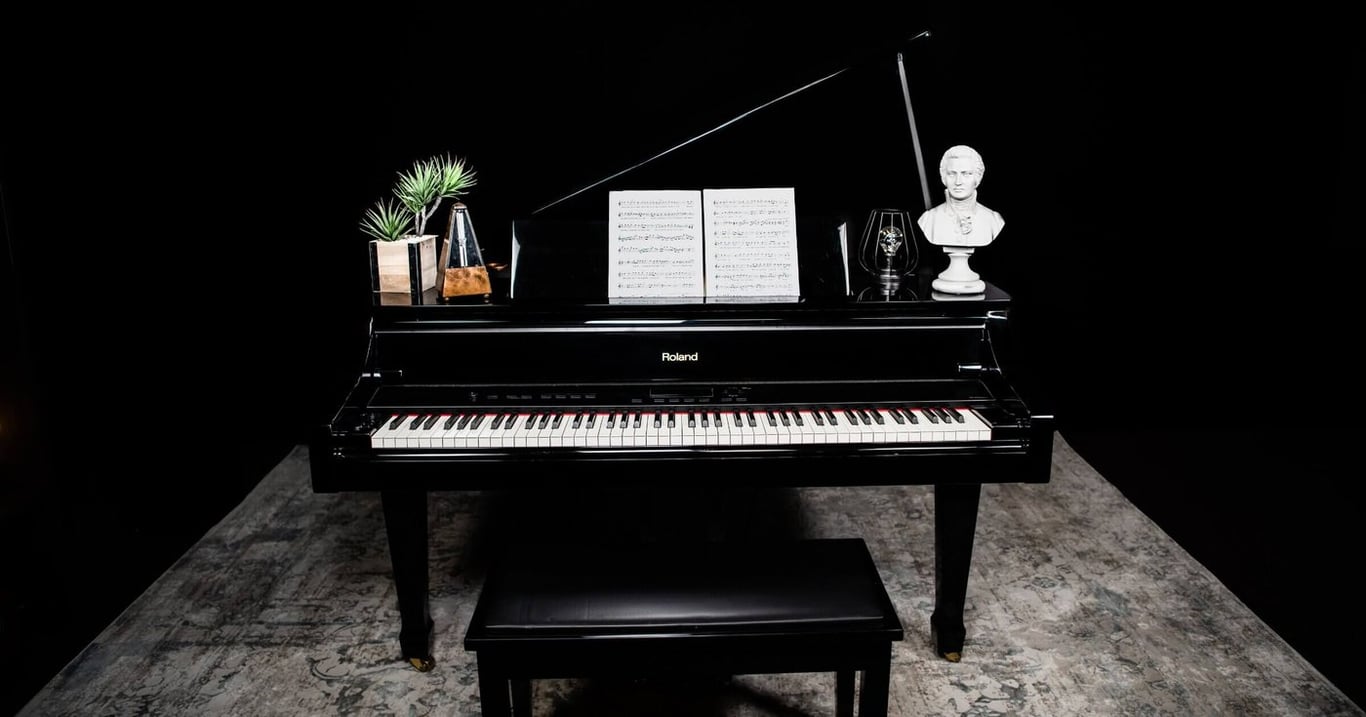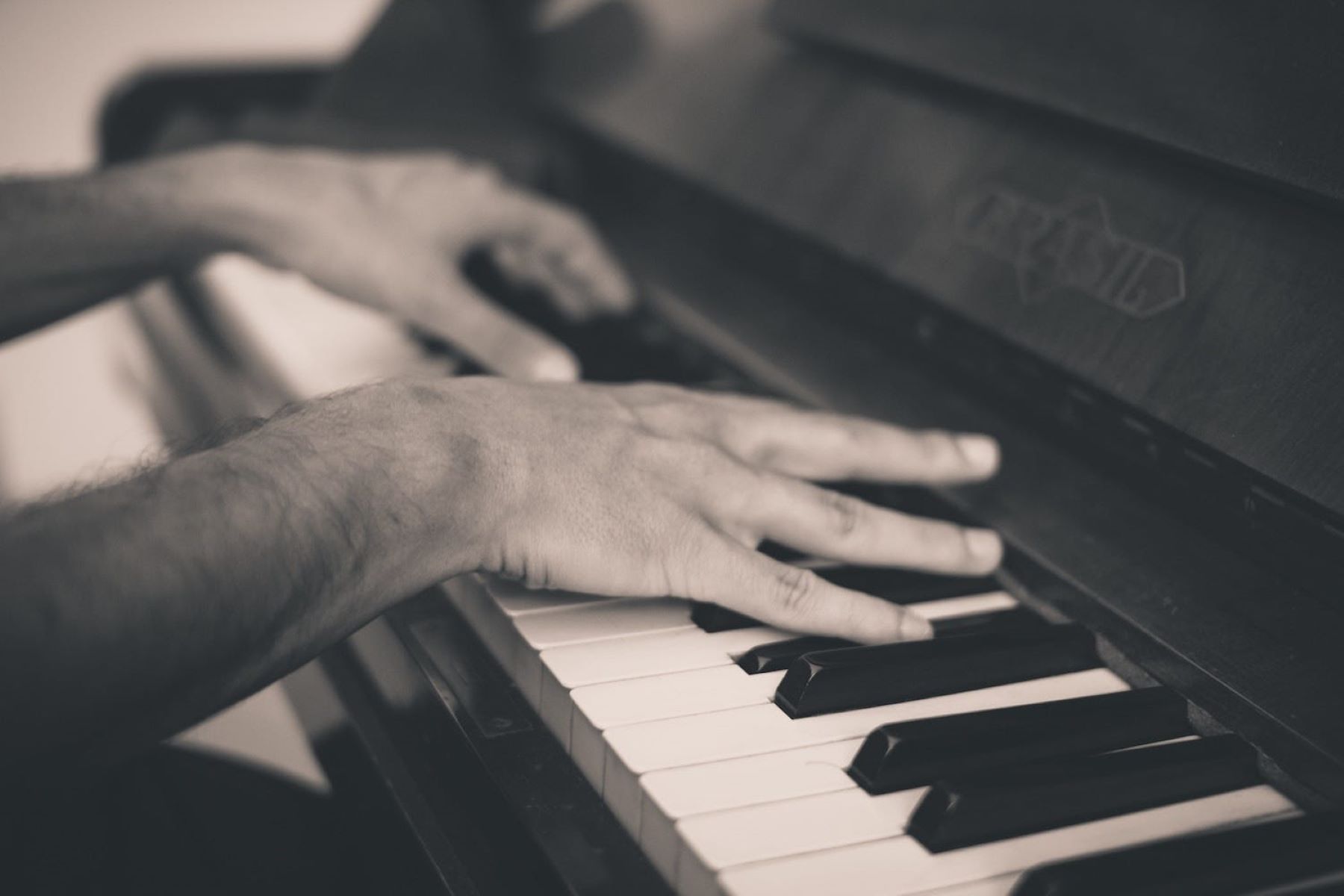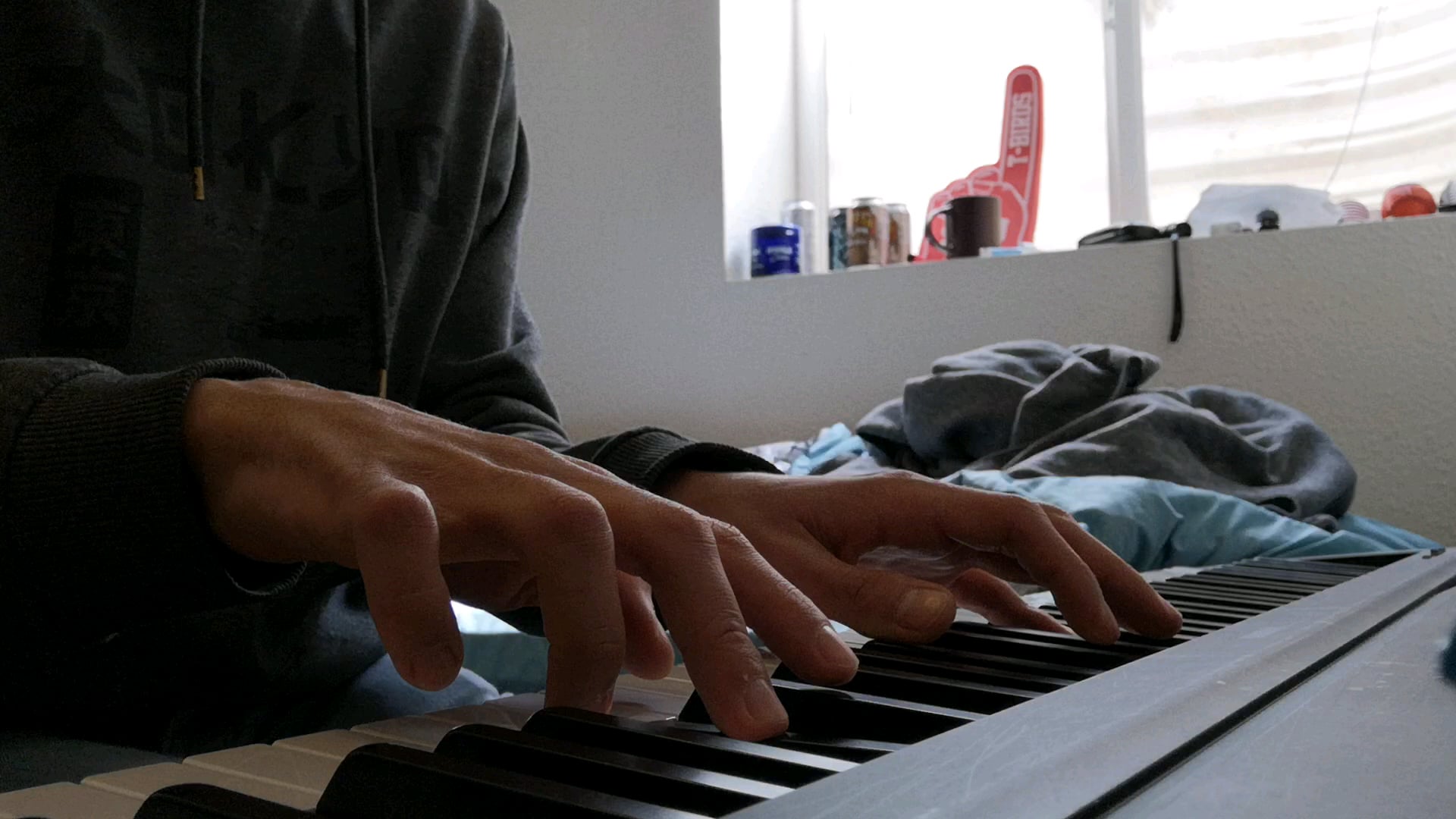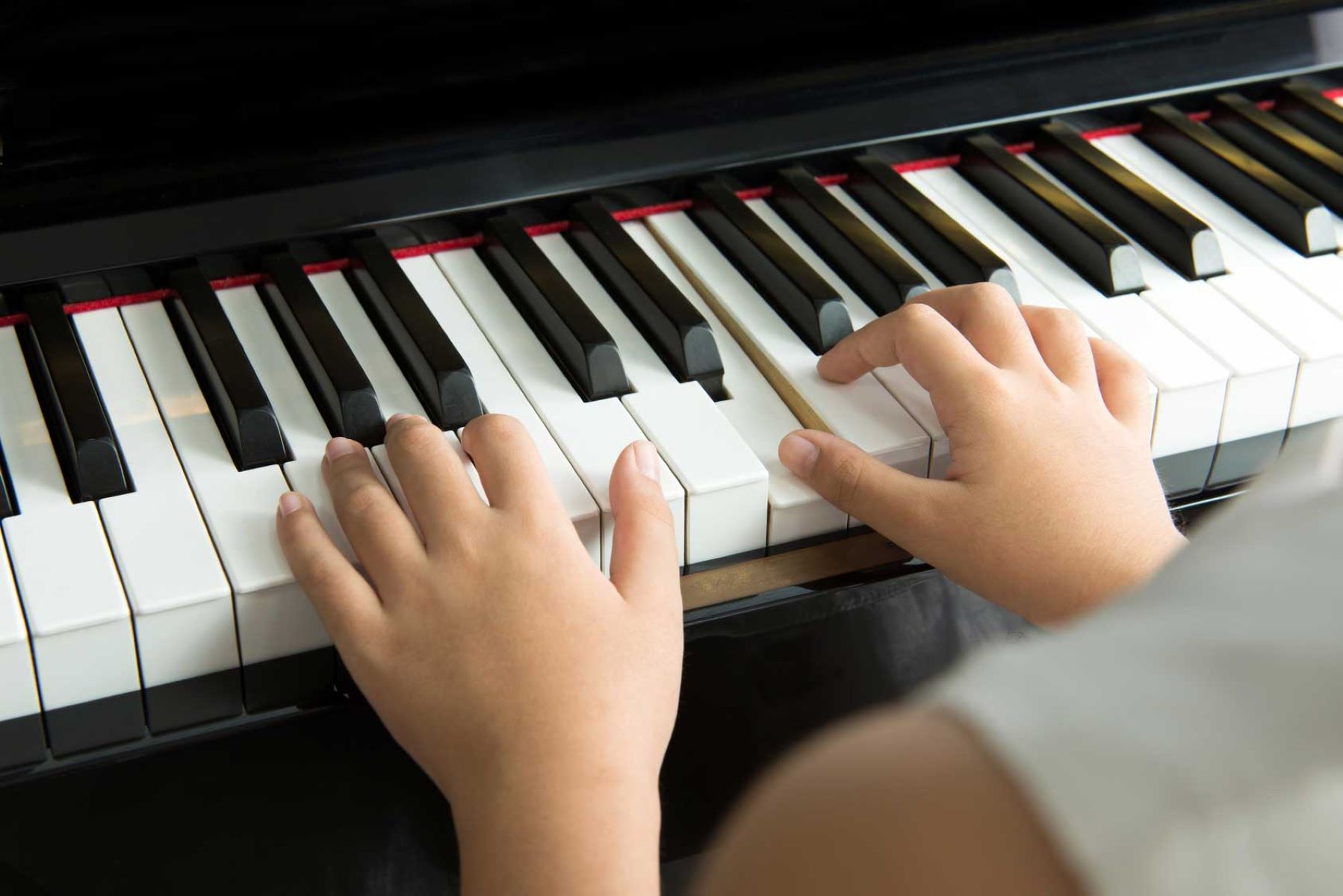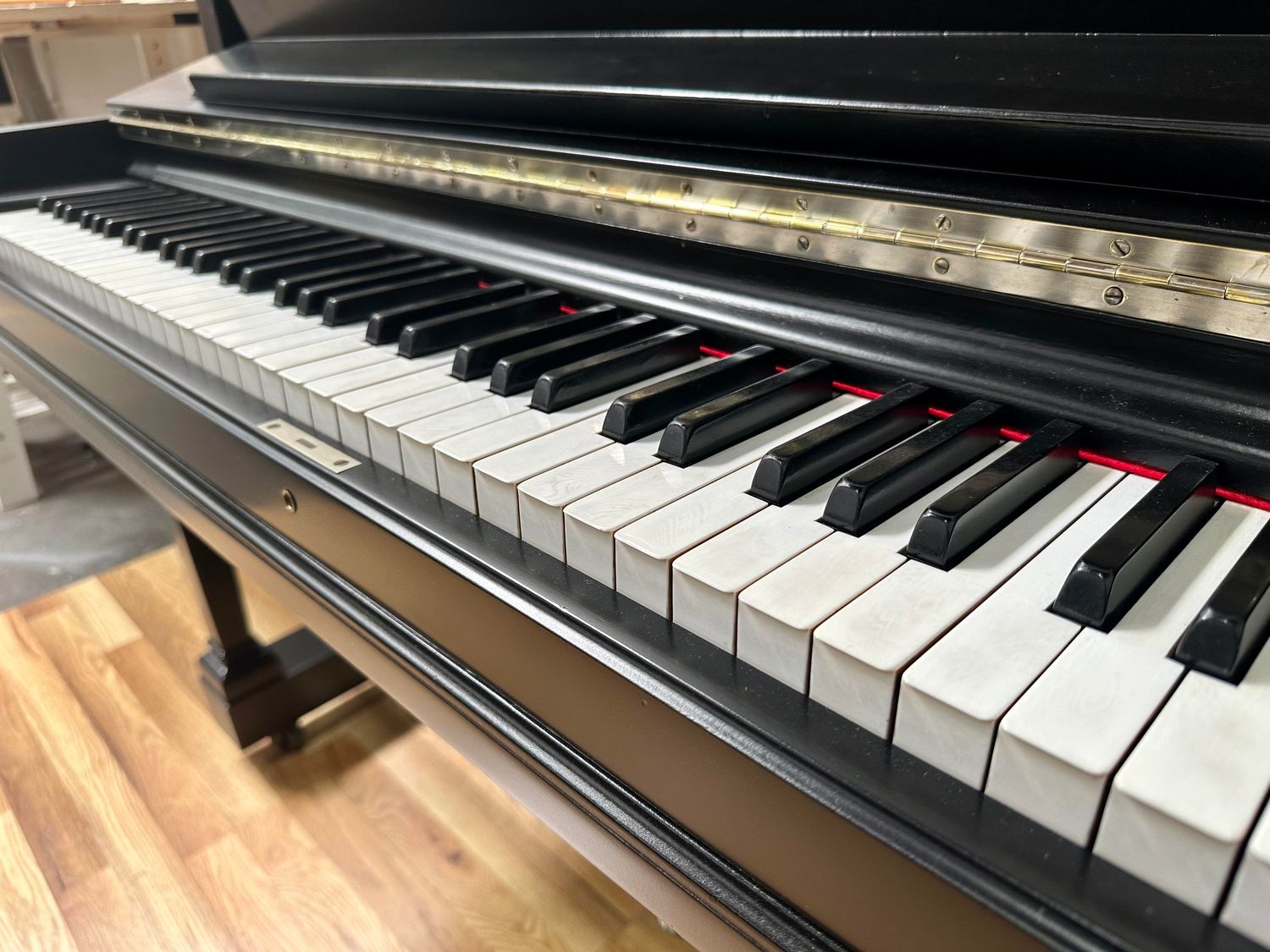Home>Instruments>Piano>How To Play Bm7 On Piano


Piano
How To Play Bm7 On Piano
Published: February 10, 2024
Learn how to play Bm7 chord on the piano with our step-by-step guide. Master the technique and impress your audience. Start playing piano today!
(Many of the links in this article redirect to a specific reviewed product. Your purchase of these products through affiliate links helps to generate commission for AudioLover.com, at no extra cost. Learn more)
Table of Contents
Introduction
Welcome to the world of piano playing! Whether you’re a beginner or an experienced pianist, mastering different chords is essential for adding depth and emotion to your music. In this article, we will delve into the captivating realm of the Bm7 chord and explore how to play it on the piano. Understanding the intricacies of this chord will not only expand your musical repertoire but also enhance your overall piano skills.
As we embark on this musical journey, we will unravel the unique characteristics of the Bm7 chord, decipher the finger positioning required to play it effectively, explore different octaves for a richer sound, and learn how to seamlessly incorporate it into chord progressions. Whether you’re aiming to evoke a sense of melancholy or infuse a touch of sophistication into your compositions, the Bm7 chord is a versatile and powerful tool in your musical arsenal.
Throughout this article, I’ll provide insightful tips and techniques to help you master the Bm7 chord, allowing you to elevate your piano playing to new heights. So, let’s dive into the enchanting world of Bm7 and unravel the secrets to creating mesmerizing melodies on the piano!
Understanding the Bm7 Chord
Before delving into the specifics of playing the Bm7 chord on the piano, it’s crucial to grasp the theoretical foundation of this captivating chord. The Bm7 chord, also known as B minor 7, is a four-note chord comprising the following notes: B, D, F#, and A. In essence, it is a B minor chord with an added minor 7th interval, denoted as “m7.”
The Bm7 chord exudes a rich, melancholic quality, making it a popular choice for evoking introspection and depth in musical compositions. When played on the piano, the Bm7 chord creates a sense of emotional resonance, adding a touch of sophistication to any piece. Its distinctive blend of minor and 7th intervals imbues compositions with a nuanced and emotive character, making it a favorite among composers and pianists alike.
Understanding the harmonic structure of the Bm7 chord is essential for harnessing its expressive potential. The chord’s foundation lies in the B minor scale, which consists of the notes B, C#, D, E, F#, G, and A. By incorporating the minor 7th interval, represented by the note A, the Bm7 chord acquires its signature bittersweet allure.
As you familiarize yourself with the Bm7 chord, take note of its inherent versatility. Whether employed in jazz, classical, pop, or blues genres, the Bm7 chord seamlessly integrates into diverse musical styles, adding depth and complexity to compositions. Its emotive resonance and harmonic richness make it a valuable asset in the pianist’s repertoire, offering boundless opportunities for creative expression.
Now that we’ve unraveled the essence of the Bm7 chord, let’s proceed to explore the intricacies of positioning your fingers to play this enchanting chord on the piano.
Finger Positioning for Bm7 on Piano
Mastering the finger positioning for the Bm7 chord is fundamental to producing a resonant and harmonious sound on the piano. To play the Bm7 chord, position your hand over the keys with a relaxed and natural posture. Let’s break down the finger positioning for the Bm7 chord step by step:
- Root Note (B): Start by placing your thumb (finger 1) on the B note, which serves as the root of the Bm7 chord. Position your hand so that your thumb comfortably rests on the B key while maintaining a relaxed and arched hand shape.
- Minor 3rd (D): Next, place your middle finger (finger 3) on the D note, which forms the minor 3rd interval within the Bm7 chord. Ensure that your middle finger is positioned comfortably and naturally on the D key, maintaining a relaxed hand posture.
- Perfect 5th (F#): Your fifth finger (finger 5) should be placed on the F# note, which constitutes the perfect 5th interval in the Bm7 chord. Position your fifth finger with ease and fluidity, allowing for seamless movement across the keys.
- Minor 7th (A): Lastly, use your index finger (finger 2) to press the A key, representing the minor 7th interval in the Bm7 chord. Ensure that your index finger is positioned comfortably and does not exert unnecessary tension on the keys.
Once your fingers are positioned correctly on the respective notes, gently press down on the keys to produce a unified and resonant Bm7 chord. It’s essential to maintain a relaxed hand posture and ensure that each finger exerts the appropriate amount of pressure on the keys to achieve a balanced and melodious sound.
As you familiarize yourself with the finger positioning for the Bm7 chord, practice transitioning smoothly between the Bm7 and other chords to enhance your dexterity and fluidity on the piano. Developing muscle memory and finger agility is key to mastering the Bm7 chord and integrating it seamlessly into your musical repertoire.
Now that we’ve established the optimal finger positioning for the Bm7 chord, let’s explore the versatility of playing the Bm7 chord in different octaves to add depth and richness to your musical arrangements.
Playing Bm7 in Different Octaves
Exploring the various octaves on the piano allows you to infuse your music with depth and versatility. When playing the Bm7 chord in different octaves, you can evoke distinct moods and create captivating harmonic textures. Let’s delve into the art of playing the Bm7 chord across different octaves to unlock its full expressive potential.
Low Octave: To play the Bm7 chord in a lower octave, begin by positioning your left hand over the keys. Place your fifth finger (finger 5) on the B note, followed by your third finger (finger 3) on the D note, and your first finger (thumb) on the F# note. Finally, use your index finger (finger 2) to press the A key. This formation produces a rich and resonant Bm7 chord in the lower register, adding depth and warmth to your musical compositions.
Middle Octave: Transitioning to the middle octave, position your right hand over the keys. Place your thumb (finger 1) on the B note, followed by your middle finger (finger 3) on the D note, your fifth finger (finger 5) on the F# note, and your index finger (finger 2) on the A key. Playing the Bm7 chord in the middle octave yields a balanced and expressive sound, ideal for conveying emotional depth and complexity in your music.
High Octave: When playing the Bm7 chord in a higher octave, position your right hand over the keys in the upper register. Place your thumb (finger 1) on the B note, your middle finger (finger 3) on the D note, your fifth finger (finger 5) on the F# note, and your index finger (finger 2) on the A key. Playing the Bm7 chord in the higher octave imparts a sense of ethereal beauty and clarity, lending a poignant and crystalline quality to your musical arrangements.
Experimenting with different octaves empowers you to tailor the mood and atmosphere of your compositions, allowing for nuanced expression and creative versatility. Whether you seek to evoke introspection with the low octave, convey emotional depth in the middle octave, or infuse your music with ethereal qualities in the high octave, playing the Bm7 chord across various registers enriches your musical palette.
As we continue our exploration of the Bm7 chord, let’s uncover how to seamlessly incorporate this evocative chord into captivating chord progressions, enhancing the harmonic tapestry of your musical creations.
Incorporating Bm7 into Chord Progressions
Integrating the evocative Bm7 chord into your chord progressions infuses your music with depth, emotion, and harmonic richness. Whether you’re composing a soulful ballad, a jazz-inspired piece, or a contemplative melody, the Bm7 chord adds a touch of sophistication to your musical tapestry. Let’s explore how to seamlessly incorporate the Bm7 chord into captivating chord progressions, elevating the expressive quality of your compositions.
Emotional Resonance: The Bm7 chord’s inherent melancholic allure makes it an ideal choice for conveying emotional depth in your chord progressions. Whether used as a standalone chord or as part of a sequence, the Bm7 chord infuses your music with a sense of introspection and contemplative beauty. Its seamless integration into chord progressions evokes a profound emotional resonance, captivating listeners and imbuing your compositions with a poignant allure.
Transitional Elegance: When transitioning between chords, the Bm7 chord serves as a transitional gem, adding elegance and fluidity to your musical arrangements. Whether transitioning to the ethereal qualities of the D major chord or the introspective nature of the G major chord, incorporating the Bm7 chord as a pivot creates a seamless and graceful progression, enriching the harmonic landscape of your music.
Jazz-inspired Harmonies: In jazz compositions, the Bm7 chord contributes to the sophisticated and expressive harmonies that define the genre. Whether woven into a sultry jazz ballad or a lively jazz standard, the Bm7 chord lends a touch of allure and complexity to jazz-inspired chord progressions. Its harmonic richness and emotive qualities elevate the musical narrative, captivating audiences with its alluring tonal palette.
Modal Explorations: Within modal compositions, the Bm7 chord expands the harmonic possibilities, allowing for modal explorations and captivating tonal shifts. Whether venturing into the enigmatic realms of the Dorian mode or the emotive landscapes of the Aeolian mode, integrating the Bm7 chord into modal chord progressions unlocks boundless creative potential, offering a tapestry of expressive hues and tonal textures.
By skillfully incorporating the Bm7 chord into your chord progressions, you infuse your compositions with a captivating blend of emotional depth, transitional elegance, jazz-inspired harmonies, and modal explorations. The Bm7 chord serves as a versatile and indispensable tool in your musical repertoire, enriching your compositions with its emotive resonance and harmonic allure.
As we continue our musical odyssey, let’s uncover valuable tips and techniques for mastering the Bm7 chord on the piano, empowering you to harness its expressive potential with finesse and artistry.
Tips for Mastering Bm7 on Piano
Mastering the Bm7 chord on the piano requires dedication, practice, and a nuanced understanding of its harmonic intricacies. Here are invaluable tips and techniques to enhance your proficiency in playing the Bm7 chord with finesse and artistry:
- Relaxed Hand Posture: Maintain a relaxed hand posture when playing the Bm7 chord, ensuring that your fingers are poised over the keys with ease and fluidity. Tension-free hand positioning promotes agility and facilitates smooth transitions between chords, enhancing your overall dexterity on the piano.
- Dynamic Expression: Embrace dynamic expression when playing the Bm7 chord, varying the intensity and touch to evoke different moods and textures. Experiment with subtle nuances in dynamics, from gentle pianissimo to resonant fortissimo, to imbue your rendition of the Bm7 chord with emotive depth and expressive range.
- Chord Progression Practice: Engage in chord progression practice exercises that incorporate the Bm7 chord within diverse musical contexts. By integrating the Bm7 chord into varied progressions, you refine your ability to transition seamlessly between chords, fostering a deeper understanding of its harmonic relationships within musical compositions.
- Ear Training: Cultivate your ear for harmonic nuances by engaging in ear training exercises focused on the Bm7 chord. Develop the ability to identify the sound and quality of the Bm7 chord within musical passages, honing your auditory perception and enriching your musical sensibilities.
- Exploration of Inversions: Explore different inversions of the Bm7 chord across the piano keyboard, expanding your harmonic palette and fostering a comprehensive understanding of its voicings. Experiment with root position, first inversion, and second inversion voicings to discover the unique timbral qualities and harmonic richness of each inversion.
- Artistic Interpretation: Infuse your interpretation of the Bm7 chord with artistic flair, allowing for personal expression and musical storytelling. Embrace the emotive potential of the chord, weaving your unique narrative through nuanced phrasing, subtle rubato, and expressive articulation.
- Collaborative Playing: Engage in collaborative playing experiences, whether with fellow musicians or backing tracks, to explore the interplay of the Bm7 chord within ensemble settings. Collaborative sessions provide opportunities for musical dialogue, improvisation, and collective creativity, enriching your understanding of the Bm7 chord’s role in ensemble performance.
By integrating these tips into your practice routine and musical explorations, you will elevate your mastery of the Bm7 chord, unlocking its expressive potential and harnessing its captivating allure with confidence and artistry.
As you continue your musical journey, embrace the beauty and versatility of the Bm7 chord, allowing its emotive resonance to enrich your musical narratives and inspire your creative endeavors on the piano.

